One of the great childhood story characters of all time, Winnie the Pooh, began with a Canadian bear, and a Canadian soldier.
Now, on the 100th anniversary of the original event, an exhibition of memorabilia is being mounted at Toronto’s Ryerson University. The display opens on November 6 and runs until December 7
Lindsay Mattick, the great-granddaughter of that soldier has donated family artefacts for the exhibition.
Listen
In 1914, war had been declared in Europe, which quickly brought other nations around the world to arms, including Canada.
In this country, transcontinental steam trains, now often full of troops, horses and materiel, would make a regular stop to take on water and coal, and perform maintenance at White River in northern Ontario.
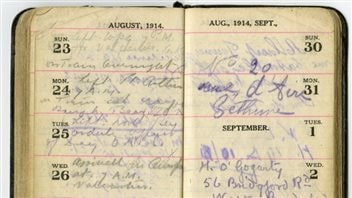
The troops and horses would get off for exercise and perhaps some drills during the four to six hour stop.
It was on August 24, 1914, that the young subaltern, Harry Colebourn, a member of the Army Veterinary Corps seconded to the Fort Garry Horse Regiment of Winnipeg, got off one such train.
He met a local hunter who had shot a mother bear and taken a cub with him.
Harry bought the cub for $20, a hefty sum at the time (roughly equivalent to about $450 by today’s standards.)
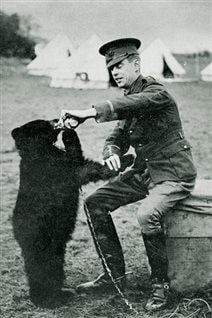
Originally from England, Colebourn came to Canada as a teenager arriving in Ontario to study veterinary medicine, then moving on to Winnipeg, Manitoba which he considered to be his home.
Naming her “Winnie” after his home town, the bear became the mascot of the Fort Garry Horse, eventually travelling with the soldiers to England where he was very popular with the entire 2nd Canadian Infantry Brigade who also considered him their mascot.
Shortly afterward, the regiment received orders to embark for the war in France. It was obvious Winnie could not accompany the troops, so the recently promoted Captain Colebourn sent her to the London Zoo until his return.
The completely tame Winnie quickly became a favourite at the zoo, with children allowed to hand feed and pet her. During occasional visits he was able to make to the zoo, Colebourne saw how popular the bear was with the public and decided to formally donate the bear in 1919.
Years later, author AA Milne and son Christopher Robin would often visit. The young child added the name “Pooh” after a pet swan named Pooh. His own stuffed bear he named “winnie the pooh”
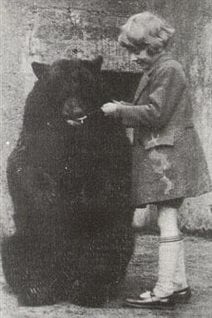
Milne wrote four books about Winnie the Pooh, which became hugely popular and which have been translated into dozens of languages.
The Disney Corporation purchased rights to the character in the 1960’s and produced several animated features which further popularized the character.
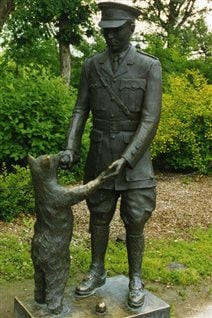
After a full life at the London Zoo, Winnie died at age 20. The bear was so widely known and popular that her death was reported in obituaries in British newspapers.
There is a bronze statue and plaque in Winnie’s honour at the zoo.
Harry Colebourn survived the war, returning with the rank of Major. He stayed in England for several years working with the Royal College of Veterinary Surgeons, before returning to Canada in private practice in Winnipeg.
He retired in 1945, and passed away in 1947.
There is also a statue of Colebourne and Winnie at the Assiniboine Park Zoo in Winnipeg.
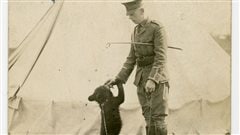






For reasons beyond our control, and for an undetermined period of time, our comment section is now closed. However, our social networks remain open to your contributions.